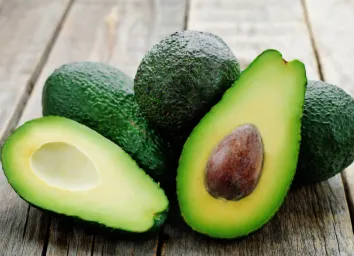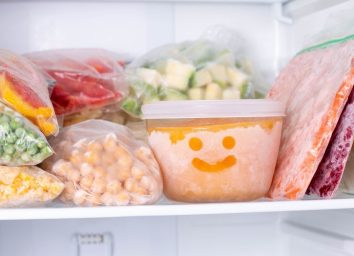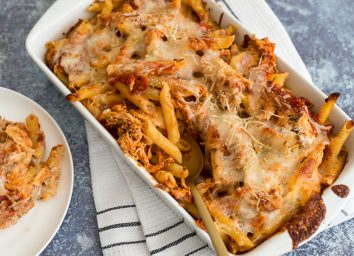Is It Safe to Eat Food That Has Freezer Burn?

You can spot freezer burn the minute you see it—it's that mound of ice crystals that have seemingly fused onto your frozen blueberries and strawberries in the Ziploc bag, or on the top layer of your beloved, unfinished pint of ice cream, or to the corner of that piece of steak you've been saving. This blemish may cause you to draw the conclusion that the affected food is no longer edible, right? We turned to Natalie Rizzo, MS, RD, and author of The No-Brainer Nutrition Guide For Every Runner to set the record straight, once and for all. But before we dive into whether food with freezer burn is actually safe to eat or not, it may be helpful to identify what freezer burn is and why it appears, so let's start there.
What is freezer burn?
Freezer burn can either change the color of a particular food—most likely meat—or it can appear as a clump of ice crystals. You may have pulled out a raw chicken breast from the freezer before and noticed that a grayish-brown patch had formed on it. As Claudia Sidoti, head chef of Hello Fresh, told us in an article about storing chicken in the freezer, this discoloration occurs when the chicken is exposed to air, and as a result, becomes dehydrated.
Is it safe to eat food with freezer burn?
"According to the USDA, freezer burn just makes food dry because of air coming in contact with food," says Rizzo. "You can cut off spots with freezer burn, or you may want to discard the entire item if it's covered in freezer burn because it won't taste very good."
It all comes down to taste because it's completely safe to eat food that has freezer burn. However, cooking up a dried-out piece of steak will not taste nearly as satisfying as one that's fresh and tender. And do you really want to munch on that cluster of ice crystals just to get to the sweet ice cream that lies beneath it? Thankfully, there are preventative measures you can take to stop freezer burn in its tracks to begin with.
What causes freezer burn, and how do you prevent it?
"Freezer burn can happen to any food, but it's more likely [to occur] on foods that are left in the freezer for months. Also, if a food isn't properly stored, it's more likely to get freezer burn," explains Rizzo. "To properly store it, make sure it's wrapped tightly enough so that air can't get in. If you are putting it in a freezer bag, wrap it in plastic wrap first and then squeeze the air out of the bag, or store it in an airtight, freezer-safe container."
Rizzo also recommends letting hot food cool in the fridge for a few hours before packing it into the freezer. An expedited way to chill food would be placing the food into a small heat-resistant bowl and then putting that bowl inside of a larger glass one with half water and half ice. It's important to chill food before it goes into the freezer. Otherwise, this warm food could bring down the temperature in the freezer, causing nearby foods to partially thaw and then refreeze. This, in part, may cause the food's texture and even flavor to alter.
Also, be sure to keep your freezer tightly packed—not overflowing—to conserve energy and to ultimately help keep all of the foods in the freezer frozen.
Now, are you inspired to do a quick check of your freezer? Luckily, you can still eat those foods with freezer burn on them—and you've also learned how to avoid it in the first place!








